| Storefronts
The storefront is usually the most prominent feature of a historic
commercial building, playing a crucial role in drawing customers
and increasing business. It is not surprising that the storefront
is the feature most commonly altered in a historic commercial building.
Many alterations have completely changed or destroyed the distinguishing
features that give the storefront its historic character. Appropriate
new designs for missing or substantially altered storefronts must
take into account remaining historic elements of the storefront
and the relationship of the storefront to the historic design elements
of the façade above.
To meet the Standards for Rehabilitation, the storefront should:
- Preserve significant historic materials and features.
- Preserve the historic character of the storefront and overall
building.
|
 |
Basic guidance for designing a storefront
that meets the Standards when historic features are missing
includes: |
 |
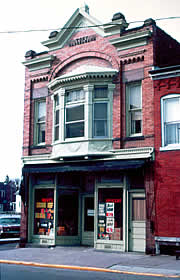
Retain and preserve remaining functional
and decorative historic features, such as display windows, signs, doors,
transoms, lower window panels, and cornices.
Pay close attention to the historic proportions of the storefront
and how the individual architectural elements relate to each
other, such as the height of transoms, amount of window glazing,
width of columns or pilasters, recessed primary and secondary
entrances, and lower window panels.
Photo: NPS files |
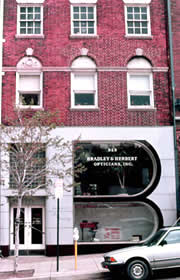
Retain later storefronts that have acquired
significance.
Storefronts constructed throughout a building’s history
may have gained significance in their own right, such as this
20th-century storefront on an older building. This storefront
should be retained. Photo: NPS files
|
 |
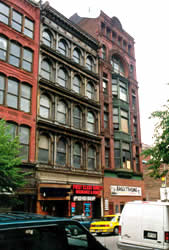
|
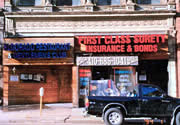
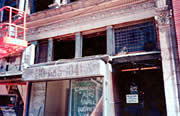
|
Replace deteriorated or missing features based
on remaining physical evidence.
Identify the remaining physical evidence. Use this information
to determine the size and pattern of transoms and location
of the historic entrances. Evidence uncovered during investigations
may help provide the necessary documentation to design an
appropriate storefront.
|
The storefront on this
late-19th century cast
iron front building (left) had been severely altered (right,
above). When the existing signage was removed, evidence of an
early prism glass transom was found (right, below). A new
compatible storefront will be designed incorporating this
feature. Photos: NPS files |
 |
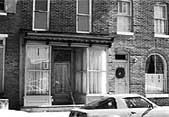
|
Preserve the storefront’s character
even when there
is a new use on the inside.
When the use of the building changes from commercial to
residential, the large display windows still need to be retained.
To provide privacy, shutters recessed behind the display area,
simple curtains, or interior blinds may be considered rather
than altering the existing historic storefront.
Photo: NPS files |

|






